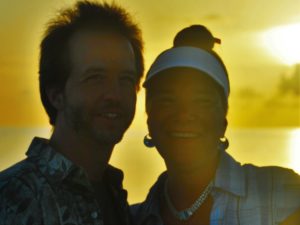Radiation is the emission (sending out) of energy from any source. There are many types of radiation.
Ultraviolet (UV) radiation is a form of electromagnetic radiation. The main source of UV radiation (rays) is the sun, although it can also come from man-made sources such as tanning beds and welding torches.
Radiation exists across a spectrum from very high-energy (high-frequency) radiation – like x-rays and gamma rays – to very low-energy (low-frequency) radiation – like radio waves. UV rays have more energy than visible light, but not as much as x-rays.
Higher energy UV rays often have enough energy to remove an electron from (ionize) an atom or molecule, making them a form of ionizing radiation. Ionizing radiation can damage DNA in the cells in our body, which in turn may lead to cancer. But because UV rays don’t have enough energy to penetrate deeply into the body, their main effect is on the skin.
- UVA rays are the weakest of the UV rays. They can cause skin cells to age and can cause some indirect damage to cells’ DNA. UVA rays are mainly linked to long-term skin damage such as wrinkles, but are also thought to play a role in some skin cancers.
- UVB rays have slightly more energy than UVA rays. They are the main rays that cause sunburns. They cause most skin cancers.
- UVC rays have more energy than the other types of UV rays. Fortunately, because of this, they react with ozone high in our atmosphere and do not reach the ground. Therefore UVC rays are not normally a risk factor for skin cancer. But they can also come from some man-made sources, such as arc welding torches, mercury lamps, and UV sanitizing bulbs that kill bacteria and other germs (such as in water, air, food, or on surfaces).
Sunlight is the main source of UV radiation, even though UV rays make up only a small portion of the sun’s rays. About 95% of the UV rays from the sun that reach the earth are UVA rays, with the remaining 5% being UVB rays. The strength of the UV rays reaching the ground depends on a number of factors, such as:
- Time of day: UV rays are strongest between 10 am and 4 pm.
- Season of the year: UV rays are stronger during spring and summer months. This is less of a factor near the equator.
- Distance from the equator (latitude): UV exposure goes down as you get farther from the equator.
- Altitude: More UV rays reach the ground at higher elevations.
- Clouds: The effect of clouds can vary. Sometimes cloud cover blocks some UV from the sun and lowers UV exposure, while some types of clouds can reflect UV and can increase UV exposure. What’s important to know is that UV rays can get through, even on a cloudy day.
- Reflection off surfaces: UV rays can bounce off surfaces like water, sand, snow, pavement, or grass, leading to an increase in UV exposure.
- Contents of the air: Ozone in the upper atmosphere, for example, filters out some UV radiation.
The amount of UV exposure a person gets depends on the strength of the rays, the length of time the skin is exposed, and whether the skin is protected with clothing or sunscreen.
Man-made sources of UV rays
Man-made sources of UV rays can also be important. These include:
- Sunlamps and sunbeds (tanning beds and booths): The amount and type of UV radiation someone is exposed to from a tanning bed (or booth) depends on the specific lamps used in the bed, how long a person stays in the bed, and how many times the person uses it. Most modern UV tanning beds emit mostly UVA rays, with the rest being UVB.
- Phototherapy (UV therapy): Some skin problems (such as psoriasis) are helped by treatment with UV light. For a treatment known as PUVA, a drug called a psoralen is given first. Another treatment option is the use of UVB alone (without a drug).
- Black-light lamps: These lamps use bulbs that give off UV rays (mostly UVA). The bulb also gives off some visible light, but it has a filter that blocks most of that out while letting the UV rays through.
- Mercury-vapor lamps: Mercury-vapor lamps can be used to light large public areas such as streets or gyms. UV exposure can only occur if the outer bulb is broken. Some mercury-vapor lamps are designed to turn themselves off when the outer bulb breaks.
- High-pressure xenon and xenon-mercury arc lamps, plasma torches, and welding arcs: Xenon and xenon-mercury arc lamps are used as sources of light and UV rays for many things, such as UV “curing” (of inks, coatings, etc.), video projection, fiber optics, disinfection, to simulate sunlight (to test solar panels, for example), and even in some car headlights. Most of these, along with plasma torches and welding arcs, are mainly of concern in terms of workplace UV exposure.

